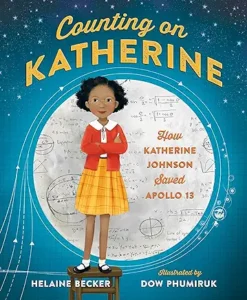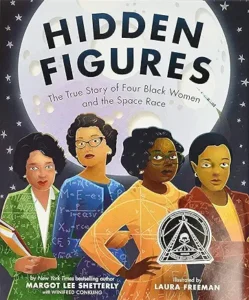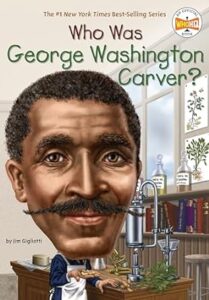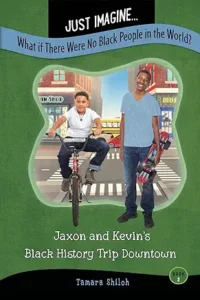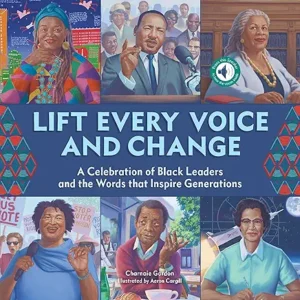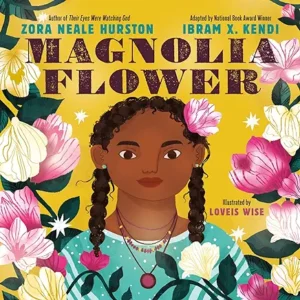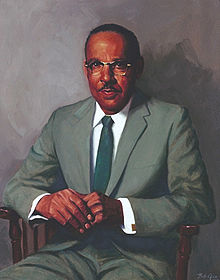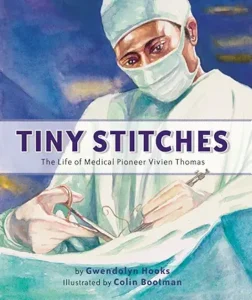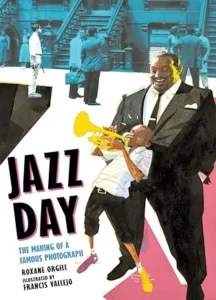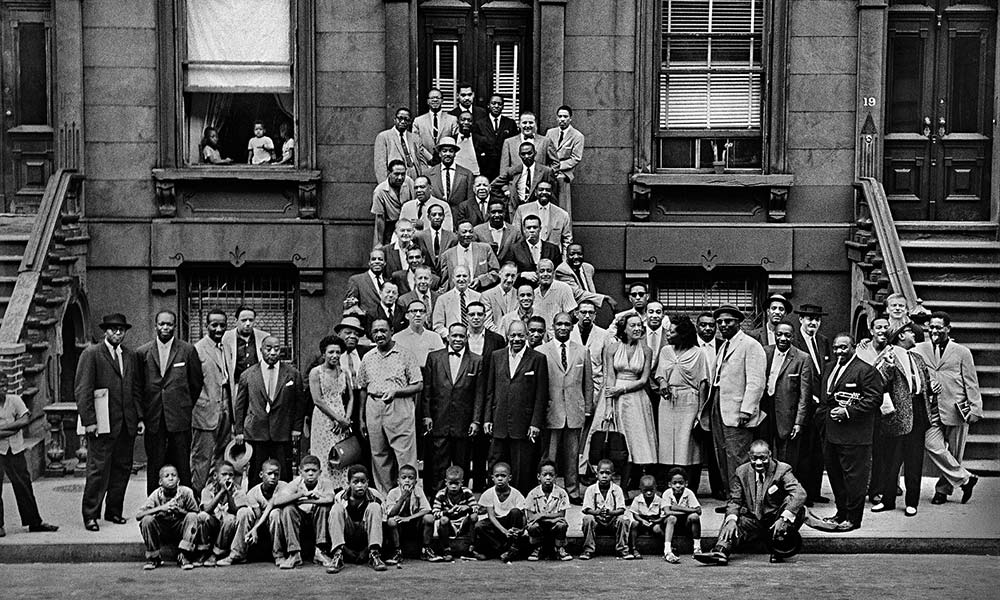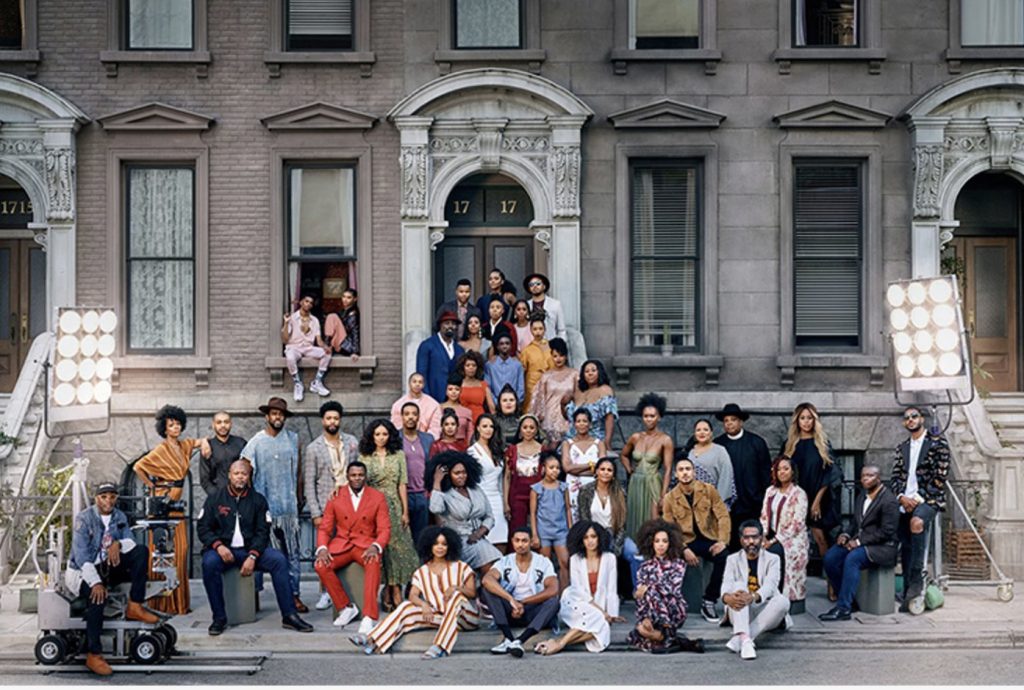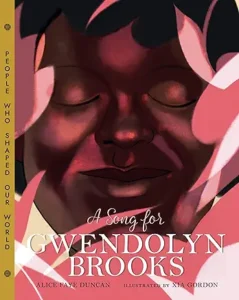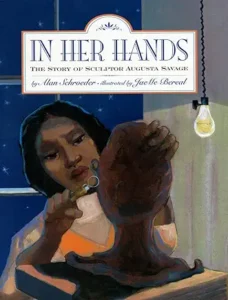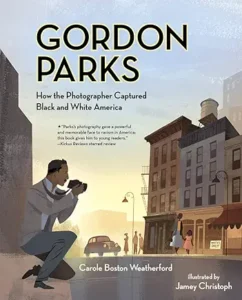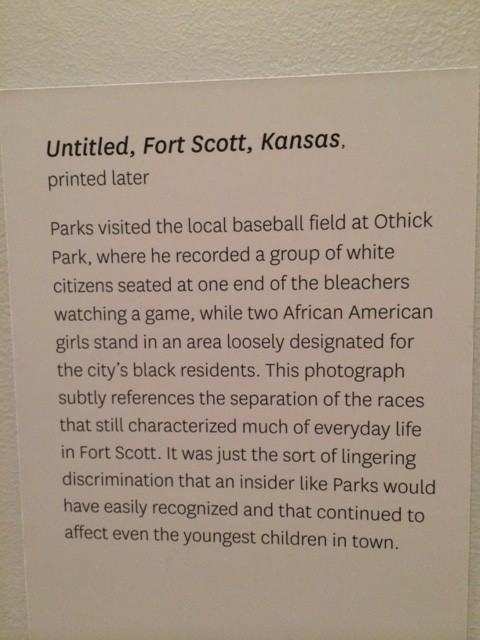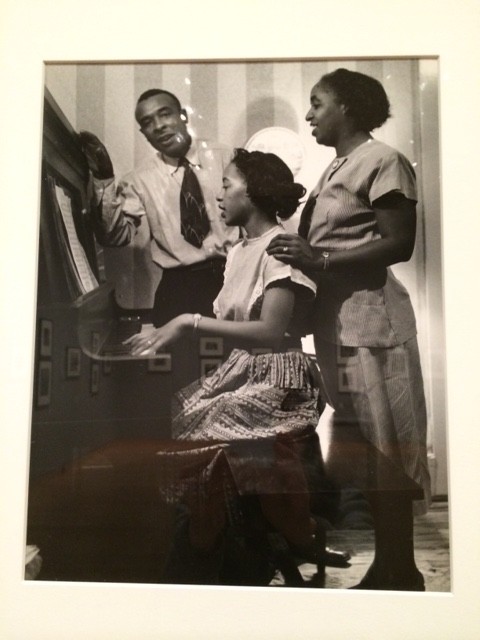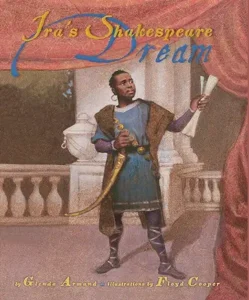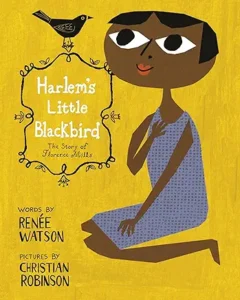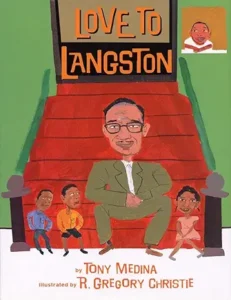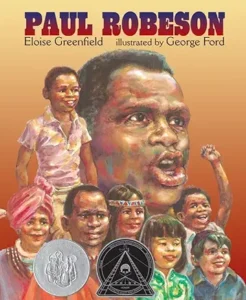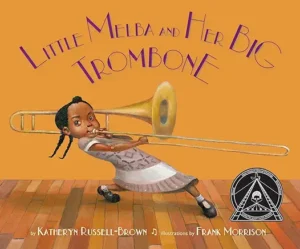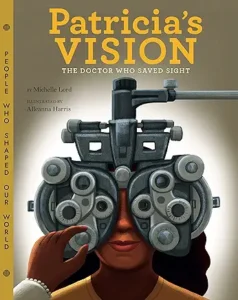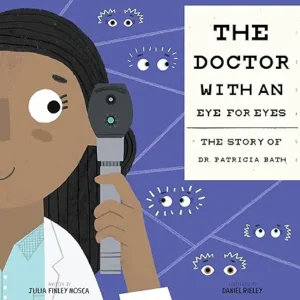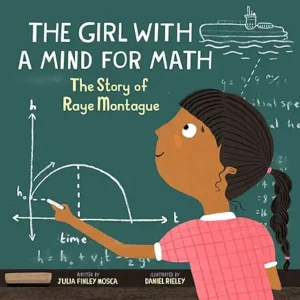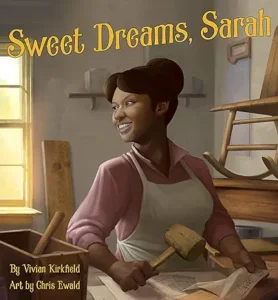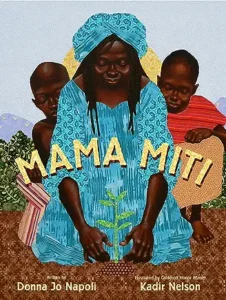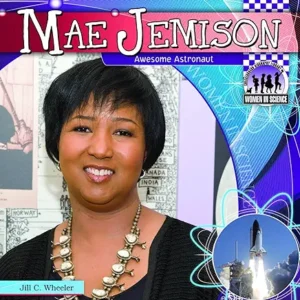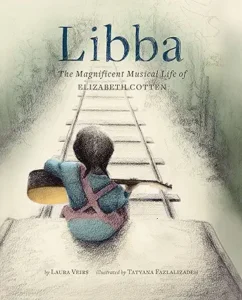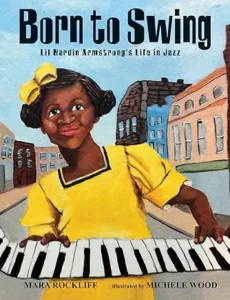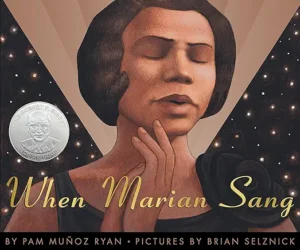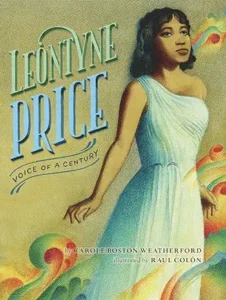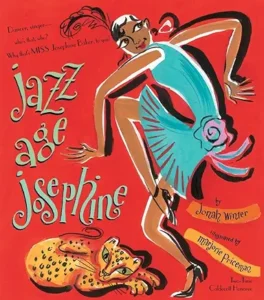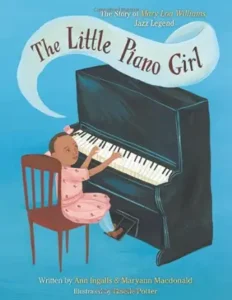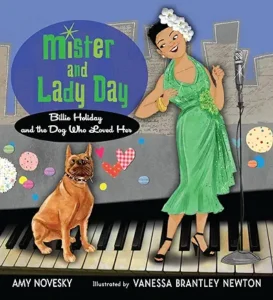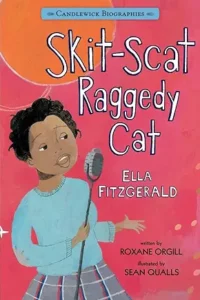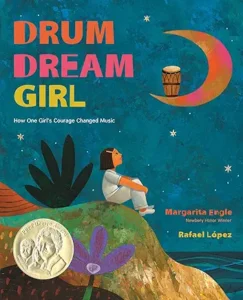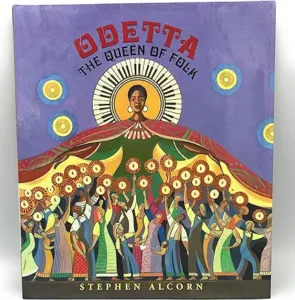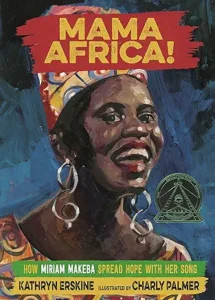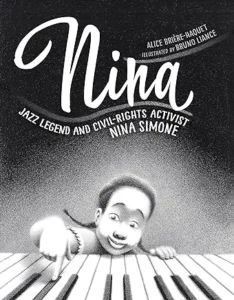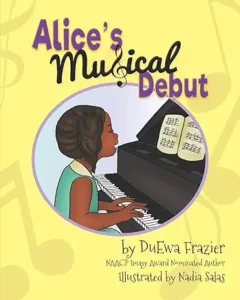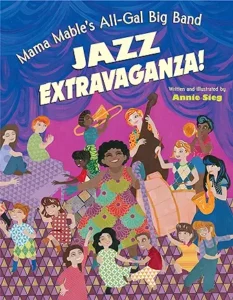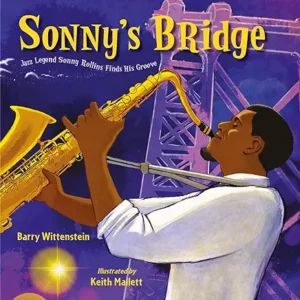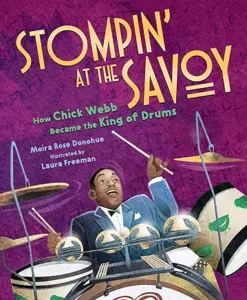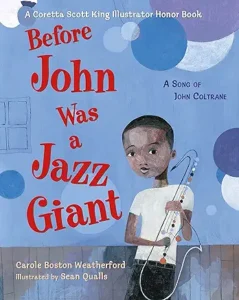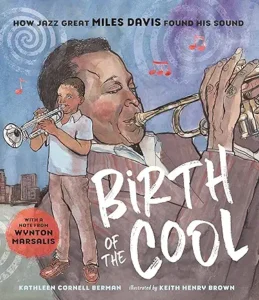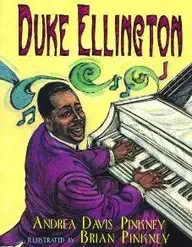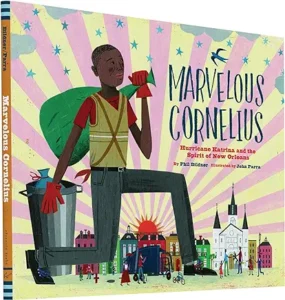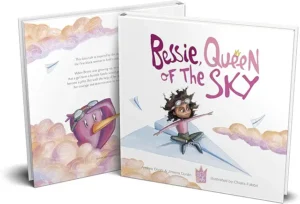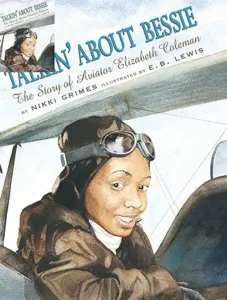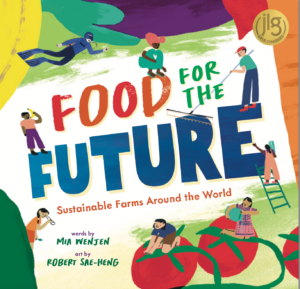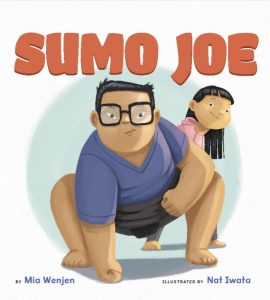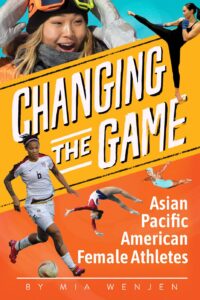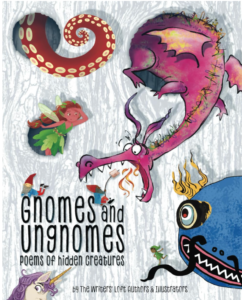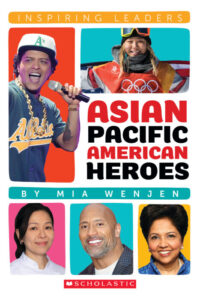I have compiled some of my book lists to include all the books that I could find that showcase Black Achievement. So far, my list of books here is up to 48 but more books within each blog post linked below.
This list was prompted by an article in Edutopia that asked K-12 teachers to celebrate Black History Month by looking beyond the struggle of the Civil Rights Movement and focusing instead on Black excellence and achievement:
FOR STEM LOVERS
By now, Katherine Johnson, whose story was portrayed in the movie Hidden Figures, may be known to you. She was one of the mathematical engineers who helped NASA put astronauts on the moon. NASA’s K–12 Modern Figures Toolkit can arm you with lessons and activities about Johnson and the mathematicians she worked with to highlight lesser-known STEM greats.
Johnson died in February 2020, and her story illustrates not only achievement but also how close we are to the time when segregation was still the order of the day. NASA features additional activities and fact sheets about Black astronauts and engineers on their website, and you can also use the search function on their STEM Engagement page.
FOR MAKERS AND INVENTORS
If your students are makers and tinkerers, there’s no shortage of Black inventors for them to learn about. In addition to the popular botanist and inventor George Washington Carver, there’s Frederick Jones, who made mobile refrigeration possible, allowing for the safe transport of food and medical supplies.
You can also highlight the inventions of Granville T. Woods, the man responsible for making train travel safe through his communication system. Not only did he register more than 60 patents, but also he had to defend those patents against giants like Thomas Edison, who took him to court twice unsuccessfully to lay claim to Woods’s work.
FOR BUDDING ENTREPRENEURS
For Wall Street watchers, the owner of the Atlanta Life Insurance Company might catch their interest. Alonzo Herndon was penniless when he was emancipated from enslavement, but he went on to build an empire that included several thriving businesses. There are also helpful activities and resources about his life on the Georgia Public Broadcasting site.
Further, your students may have heard of the Tulsa Massacre, but they probably haven’t heard much about Ottawa W. Gurley, the man who planned out the Greenwood community in Oklahoma known as “Black Wall Street.” Gurley, born to a freed enslaved couple, worked as a teacher, postal worker, and principal but excelled at entrepreneurship.
He owned land and was responsible for mapping out the community of Greenwood. Gurley was able to build hotels and churches and to lend money to other fledgling businesses. His worth at the time of the Tulsa Massacre was said to be $200,000, or about $4 million in purchasing power today.
FOR CREATIVES
Musicians like James Reese Europe and his Clef Club Orchestra, the first all-Black orchestra to play Carnegie Hall, might interest your budding musicians. Or maybe they would like to know about Lorraine Hansberry, who, while only 34 when she died, is still considered one of the greatest African American playwrights because of her renowned work A Raisin in the Sun, the first play on Broadway written by a Black female playwright.
Perhaps your students would like to know about female millionaire Madame C. J. Walker, who created hair products for textured hair long before Carol’s Daughter and Miss Jessie. For students who are interested in masters of the canvas, introduce Robert S. Duncanson, said to be the most brilliant landscape painter of the West.
Finally, for those who dream of influencer fame, you could introduce socialites like Blanche Dunn, described as Harlem’s “It girl,” or Jeremiah Hamilton, a businessman who managed to defy the boundaries of racism to be named New York’s first Black millionaire.
That really struck a chord with me because I feel the same way about Japanese American books that center around WWII Internment.
Today, I thought I would compile all of my blog posts on African American children’s books and pull out the ones that showcase Black achievement. But first, let me introduce you to Tamara Shiloh. She’s the owner of Multicultural Bookstore and Gifts in Richmond, CA (Northern California), and the author of middle-grade books that showcase Black achievement.
48 Children’s Books Showcasing Black Achievement
Jaxon’s Magical Adventure with Black Inventors and Scientists by Tamara Shiloh
I was delighted to join Jaxon on his magical adventure to learn about Black inventors and scientists as he discovers what would be missing if there were no Black people in the world. [middle grade, ages 8 and up]
- John Stanard (refrigerator)
- Lloyd Ray (dustpan)
- Thomas Stewart (mop)
- Madame C. J. Walker (hair products)
- Lyda Newman (brush)
- Walter Sammons (hot comb)
- Jan Matzeliger (shoes)
- John Love (pencil sharpener)
- Dr. Mark Dean (personal computer)
- Granville Woods (telegraph)
- John Burr (lawnmower)
- Alexander Miles (elevator)
- Philip Downing (mailbox)
- Lewis Latimer (light bulb filament)
- Dr. Charles Drew (blood bank)
- Dr. Daniel Hale Williams (the first doctor to perform open-heart surgery)
Jaxon and Kevin’s Black History Trip Downtown by Tamara Shiloh
We meet more scientists as Jaxon and Kevin take a trip downtown and discover what would go missing if there were no Black people in the world.
- Osbourn Dorsey (doorknob with lock)
- Isaac Johnson (folding bicycle frame)
- Garrett Morgan (traffic light with a yellow light)
- Augustus Jackson (ice cream innovator)
- Alfred Cralle (ice cream scoop with lever)
- Robert Flemming Jr. (Euphonica guitar)
- Joseph Dickinson (arm for record player)
- Charles Brooks (self-propelled street sweeper)
- Ruane Jeter (first toaster with digital timer)
- Willis Johnson (mechanical egg beater)
- Judy Reed (improved rolling pin)
- Alexander Ashbourne (biscuit cutter)
- Maurice Lee (pressure cooker)
- Henry Jackson (kitchen island)
- George Hammell Cook (improved automatic fishing reel)
- Dr. George Grant (wooden golf tee)
- Joseph Winters (wagon-mounted ladder for fire trucks)
- Mary Kenner (improved bathroom tissue holder)
- Dr. George Washington Carver (many products using peanuts)
- Joseph Smith (rotating lawn sprinkler)
- Leonard C. Bailey (folding bed)
Lift Every Voice and Change: A Celebration of Black Leaders and the Words that Inspire Generations by Charnaie Gordon, illustrated by Aeron Cargill
Readers can access the actual speeches of Black luminaries such as Booker T. Washington, Faith Ringold James Baldwin, Katherine Johnson John Lewis, Stacey Abrams, and Dr. Martin Luther King, Jr., just to name a few. Each page spread has a portrait and a biography as well as a famous quote. Readers press the button on the back page to hear them speak. This is a Black biography anthology AND an interactive toy. It’s a really fun way to celebrate Black History Month both in February and all year round! [interactive picture book, ages 5 and up]
Jim and the Red Tails by Jeremy P. Amick
The story of the Tuskegee Airmen is told in this rhyming picture book. Theirs is a story of overcoming racism to become the first Black pilots in an all-Black air unit during World War II. This is an important story but I wish it was told in prose instead of rhymes. [picture book, ages 4 and up]
Magnolia Flower by Zora Neal Hurston, adapted by Ibram X. Kendi, illustrated by Loveis Wise
Ibram X. Kendi adapted a short story by Zora Neal Hurston by the same name as the title that weaves Black folklore with Indigenous and Black history. This story is about the Maroons, Black people escaping enslavement, as well as Native Americans who were resisting forced relocation. It starts with the love story of Bentley to Swift Deer, a Cherokee woman fleeing her own trail of tears. Their daughter, Magnolia Flower, falls in love with John, a man of words whom her father does not approve of. Magnolia Flower and John run away together and, many decades later, return to the place where they left. The river, brook, and three leaning trees remember them. This is a way to introduce children to the words of Zora Neal Hurston. [picture book, ages 4 and up]
What books would you add to this collection? Thanks for your suggestions!
From 5 New Picture Book Biographies To Teach Kids Perseverance
Tiny Stitches: The Life of Medical Pioneer Vivien Thomas by Gwendolyn Hooks, illustrated by Colin Bootman
Did you know that the first successful open-heart surgery on a baby was performed in 1944 at Johns Hopkins? Credit went to Dr. Blalock who performed the operation but the person who actually developed the procedure and instruments was never given credit. He, Vivien Thomas, was a black man without a medical degree. And yet it was Vivien who stood behind Dr. Blalock to give him step-by-step instructions during the operation. It’s taken more than twenty-six years for the medical community to recognize his contribution. With only a high school education, Vivien Thomas overcame racism to become a medical pioneer, saving the lives of countless “blue babies.” [advanced picture book biography, ages 6 and up]
From HARLEM: Found Ways & Harlem Children’s Books
Jazz Day: The Making of a Famous Photograph by
Some of the 57 musicians featured in the photograph lived in Harlem including:
Duke Ellington– composer, pianist, and bandleader; lived on Riverside Drive and at 555 Edgecombe.
Fats Waller – pianist, born at 107 West 134th Street
Mary Lou Williams – pianist; lived at 63 Hamilton Terrace
Count Basie – bandleader and pianist; lived at 555 Edgecombe Avenue
It was quite a feat to pull off the Esquire American Jazz photo, just like it is a feat to pull off this free verse poetry picture book that so perfectly captures the excitement, chaos, and personalities of that momentous day. [poetry picture book, ages 8 and up]
A Great Day In Harlem: The Most Amazing Photograph In Jazz history. Photo by Esquire Magazine.
Image by Kwaku Alston/Netflix of re-creation of the iconic 1958 photo
A Song for Gwendolyn Brooks by Alice Faye Duncan, illustrated by Xia Gordon
With nine free verse sections, Alice Faye Duncan pays tribute to Gwendolyn Brooks, the first Black writer to win the Pulitzer Prize. Combining Brooks’ own poems with Duncan’s own gives this picture book a glimpse into Gwendolyn’s talent. Muted illustrations are supporting actors to the poetry that showcases Gwendolyn Brook’s ability to bloom with very little sunlight. [picture book, ages 5 and up]
In Her Hands: The Story of Sculptor Augusta Savage by Sylvia Olsen, illustrated by Joan Larson
In the forward of the book:
As both an artist and a teacher, Augusta Savage was a central figure of the Harlem Renaissance; and though only a fraction of her work survive, she deserves to be better known.
Her story is poignant, reflecting the duality of her mother’s support of her talent and her father’s disapproval. Largely self-taught as a child, Augusta moved to New York City in pursuit of her art, landing a spot at Cooper Union. They offered her financial assistance so she could continue her studies there, a first for them. Augusta would go on to prominence as a sculptor and teacher, but sadly, very little of her work has survived. Still, her legacy remains as part of the Harlem Renaissance and the students that she influenced. [picture book biography, ages 6 and up]
From Gordon Parks: Black History Month
Gordon Parks: How the Photographer Captured Black and White America by Carole Boston Weatherford
Gordon Parks’ white teacher told her all-black class, “You’ll all wind up porters and waiters.” Gordon did end up working as a porter and waiter but he also spent $7.5o on a used camera and taught himself to use it. He vows to reveal racism through his lens. His most enduring subject is Ella Watson, a cleaning lady in the building where Parks works. Facing racism himself, Gordon Parks is an inspiration of how one man and a camera can take a powerful stand against racism with an unflinching eye, and the will to overcome obstacles. This is a picture book that kids of all ages will benefit from. Use it with Gordon Parks’ photos for a Civil Rights Movement unit using books and Civil Rights Movement art. [picture book biography, ages 4 and up]
This is the plate from an exhibit on Gordon Parks: Back to Fort Scott at the Boston Museum of Fine Arts
This small town into which I was born, has, for me, grown into the largest, and most important city in the universe. For Scott is not as tall, or as heralded at New York, Paris or London — or other places my feet have roamed, but it is home. Gordon Parks, Homecoming 2001
In the late spring of 1950, Gordon Parks (1912-2006), Life magazine’s first African-American staff photographer, was approached by his editors to do a feature on segregated schools. The topic was a subject of national debate, especially in Parks’ home state of Kansas — the Supreme Court’s landmark Brown v. Board of Education ruling would begin with a suit filed in Topeka just one year later.
For his Life assignment, Parks chose to tackle the controversial issue as seen through the lens of his own childhood in Fort Scott, in the rural southeastern corner of the state. The youngest of fifteen children, Parks had left Fort Scott in 1928, moving north following the death of his mother to live with a sister in Minnesota. And so, more than twenty years after first leaving, Parks sets out to reconnect with eleven of his elementary school classmates — the entire class of 1927 — from the all-black Plaza School that they had attended in Fort Scott.
This was a Life magazine story that DID NOT GET PUBLISHED but tells an amazing story of a time in our history when photojournalism stories were told through the paradigm of whites only. Here, Gordon Parks tells the story through the lives of his African-American classmates during a tumultuous time in U.S. history.
From This Little Light of Mine: 5 African Americans Who Excelled in the Arts
Ira’s Shakespeare Dream by Glenda Armand, illustrated by Floyd Cooper
Ira Aldridge was born free in New York during the time of slavery. From his earliest days, he dreamed of being a Shakespearean actor. That dream came true despite discouragement from his father, a minister, and the prejudice faced by black actors. In addition to those obstacles, Ira was almost sold into slavery when he was an adolescent. This last event had a profound effect on him, and when he did become the world’s first African American superstar, he used his fame and fortune to aid the cause of abolition. “I will not rest,” he said, ”until all of my people are free.” [picture book biography, ages 7 and up]
Harlem’s Little Blackbird by Renee Watson, illustrated by Christian Robinson
About one century after Ira Aldridge left New York for England to follow his dream, Florence Mills was amazing audiences on New York stages. Renee Watson tells Florence’s story in an upbeat style that fits “the little girl with the big talent.”
The daughter of former slaves, Florence, and her mother used to sing during thunderstorms. They would sing until the storm went away.
Florence fought prejudice and injustice from the very beginning of her career. Whether refusing to perform if blacks were not allowed in the audience or turning down desirable roles, Florence was always focused on helping others: “If my voice is powerful enough to stop the rain, what else can it do?” And it was that remarkable “birdlike” voice that mesmerized audiences all over the world. [picture book biography, ages 3 and up]
Love to Langston by Tony Medina, illustrated by R. Gregory Christie
Tony Medina tells the story of Langston Hughes, a contemporary of Florence Mills, in a unique and engaging way. Medina uses stand-alone poems to recount important events from the poet’s life; as he struggled with racial prejudice, segregation, and a non-supportive father. The poems describe Hughes’ experiences and feelings as Langston himself might have expressed them at different stages of his life.
Children will easily relate to First Grade, I Do Not Like My Father Very Much, and Grandma’s Stories. Medina gives the background and inspiration for each poem; which will motivate budding poets to put their own thoughts and feelings on paper.
When giving the background for one of the poems, A Bag of Oranges, the author tells how Hughes helped others who longed for their voices to be heard. When Hughes published anthologies, he included the works of new writers and poets. One of the unknowns that he helped was Pulitzer Prize winner, Alice Walker. When he was ill and near the end of his life, Langston Hughes was touched by a simple gift of fruit he received from Alice Walker. [picture book biography, ages 8 and up]
Paul Robeson by Eloise Greenfield, illustrated by George Floyd
Paul Robeson excelled in many endeavors. Greenfield interweaves Robeson’s activism, career, and personal life into a moving and eloquent story of a truly Renaissance Man. The only African American in his college class, he became the valedictorian. The first black on the football team, he was named All-American End. The list goes on. His greatest gift, though, was his deep, resonating voice.
While he used that voice to become a great actor and singer, he also raised it to speak out against racial injustice. Decades earlier, Ira Aldridge had spoken to his audiences about the evils of slavery. Now, in post-Reconstruction America, Robeson enlightened concert and theatergoers about the hardships his people still faced. And the connection between Robeson and fellow Shakespearean actor, Ira Aldridge, doesn’t end there. Robeson was the first black actor to play the lead in Othello in London since Aldridge had played the role over half a century earlier. [picture book biography, ages 6 and up]
Little Melba and Her Big Trombone by Katherine Russell-Brown, illustrated by Frank Morrison
The only one of the five featured artists who is known for playing a musical instrument, Melba Liston truly deserved the spotlight. Born in Kansas City during the heyday of the Harlem Renaissance, she began playing the trombone when she was only seven. She was quickly recognized as a prodigy. But as a woman in a “man’s field” and an African American in pre-Civil Rights era America, she encountered a double dose of prejudice. Despite that, Melba took her place among the greatest musicians of her time. She excelled as a trombonist, arranger, and bandleader. The author includes an extensive discography of Melba’s work. So we who never heard her music live can still appreciate and be inspired by Melba’s influence, talent, and determination. Her music still plays. Her light will always shine. [picture book biography, ages 6 and up]
From 10 Picture Books About Women Scientists Who Became Activists
Patricia’s Vision: The Doctor Who Saved Sight by Michelle Lord, illustrated by Alleanna Harris
Patricia Bath “saw possibility when others couldn’t.” In the 1940s few women would dare to dream of being a doctor. There were even more obstacles for women of color. Patricia did not let those challenges deter her and got her medical degree, hoping she could achieve miracles in ophthalmology. Readers will be empowered by Dr. Bath’s courage and persistence as she pursued her goal to save and restore sight to the blind and help those who couldn’t afford care. She invented a specialized laser for removing cataracts and was the first black woman doctor to receive a patent. Dr. Bath also founded the American Institute for the Prevention of Blindness. [nonfiction picture book biography, ages 5 and up]
From Women Inventors That Changed the World Picture Books
The Doctor with an Eye for Eyes: The Story of Dr. Patricia Bath by Julia Mosca, illustrated by Daniel Rieley
No matter what the obstacles, Patricia Bath was going to become a doctor, a career almost unheard of for African American women in the 1960’s. Determined to prevent blindness, Dr. Bath invented the Laserphaco Probe, a device used in cataract surgery. She was the first African American female doctor to receive a medical patent.
Having had several eye surgeries myself, including cataract removals, I feel a particular connection with the story of this amazing woman whose passion shone a light on those with vision impairment. The story, told in rhyme, will appeal to young children and the kid-friendly illustrations follow the text. [picture book biography, ages 5 and up]
The Girl With a Mind for Math: The Story of Raye Montague by Julia Finely Mosca, illustrated by Daniel Rieley
Most people thought Raye Montague should give up her dream of becoming an engineer – they thought girls should grow up to be wives and mothers. But Raye was determined, even though at that time, the college she attended did not allow African Americans to get a degree in engineering. Raye’s persistence pushed her past the racial barriers and all the way to lead the team that created a computer program that revolutionized ship design.
I love this story because it proves that if we want something hard enough and never give up, we can make our dreams into reality. [picture book biography, ages 5 and up]
Sweet Dreams, Sarah: From Slavery to Inventor by Vivian Kirkfield, illustrated by Chris Ewald
With freedom in her pocket and hope in her heart, former slave Sarah Goode traveled north to Chicago. After building an innovative piece of furniture to help her customers save space, Sarah became one of the first African American women to secure a U.S. patent, opening the door for many other ingenious women who bravely followed in her footsteps.
To help young readers connect with the main character, the book begins with the child Sarah who dreams of a better life. The lyrical text will engage both listeners and readers and the evocative illustrations carry us forward as Sarah matures and faces challenges and disappointments until the final spread when her dream is realized. Well-researched back matter, including information on patents and a timeline of African American female inventors from 1884 to the present day, will be of great value to classroom teachers. [picture book biography, ages 5 and up]
From 31+ STEM Books to Inspire Girls
Mama Miti: Wangari Maathai and the Trees of Kenya by Donna Jo Napoli, illustrated by Kadir Nelson
Wangari Muta Maathai changed Kenya tree by tree, becoming the first African woman to win the Nobel Peace Prize for her contribution to sustainable development, democracy, and peace.
This gorgeously illustrated picture book tells the inspirational story of Wangari Maathai and how she founded the Green Belt Movement; an African grassroots organization that empowers people to mobilize and combat deforestation, soil erosion, and environmental degradation. Today more than 30 million trees have been planted throughout Mama Miti’s native Kenya. [picture book biography, ages 4 and up]
Mae Jemison: Born October 17, 1956
Mae Jemison: Awesome Astronaut by Jill C Wheeler
Mae Jemison is the first African-American woman to travel in space. In addition to being an astronaut, Mae was a doctor, business owner, and volunteer in the Peace Corps. She faced racism and sexism but never let it deter her from her dreams. As an astronaut, she conducted experiments in space. The Earth We Share is a science camp for kids ages 12 to 16 that Mae launched. Mae returned to NASA for a special project to develop the first starship in 2011. [early chapter book biography, ages 8 and up]
From African-American Female Musicians Picture Books
Elizabeth Cotten (born 1893)
Libba: The Magnificent Musical Life of Elizabeth Cotten by Laura Veirs, illustrated by Tatyana Fazlalizadeh
Singer-songwriter Laura Veirs learned about Libba as a young child when her father played “Freight Train” on his guitar. A self-taught musician and the granddaughter of freed slaves, Elizabeth Cotten played the guitar upside down and backward because she was left-handed. When the demands of raising her family took her away from music, a chance encounter with Pete Seeger’s wife allowed her musical talent to flourish, but that didn’t happen until Libba was a grandmother. As a testimony to “It’s never too late.” Libba went on to record and perform. Her composition, “Freight Train,” is considered to be one of the most famous folk songs today. She wrote that song at age twelve! [picture book, ages 4 and up]
Lillian Hardin Armstrong (born 1898)
Born to Swing: Lil Hardin Armstrong’s Life in Jazz by Mara Rockliff, illustrated by Michele Wood
The Nonfiction Detectives have a great review:
Lillian Hardin Armstrong came to the music scene when only men played music professionally. As a young girl, she studied music, but when she heard jazz, that was it. While working as the piano player for the New Orleans Creole Jazz Band, she met a fellow from New Orleans…Louis Armstrong. They married and would write together, play together, form a band, The Hot Five, and record together. [picture book biography, ages 7 and up]
Marian Anderson (born 1897)
When Marian Sang: The True Recital of Marian Anderson by Pam Muñoz Ryan, illustrated by Brian Selznick
Marian Anderson was the first African American singer to perform at the Metropolitan Opera House, overcoming racism that she faced during her entire career, most notably in 1939 when Howard University in Washington D.C. tried to book a venue for her concert. After being turned down due to White Performers Only policies, it took protest from the First Lady of the United States, Eleanor Roosevelt to get her a stage at the Lincoln Memorial on Easter Sunday. A reluctant activist, Marian nonetheless, broke color barriers setting the stage for others including Leontyne Price. This biography pairs wonderfully with Leontyne Price: Voice of a Century. [advanced picture book, ages 8 and up]
Josephine Baker (born 1906)
Jazz Age Josephine: Dancer, singer–who’s that, who? Why, that’s MISS Josephine Baker, to you! by Jonah Winter, illustrated by Marjorie Priceman
Jazz Age Josephine tells her story in rollicking rhyme from her humble beginnings to her rise to fame in Europe. Her first break was in New York City at just 15 years old where she performed in Blackface, an insult to her race. At just 19 years old, Josephine moved to Paris where she became wildly popular for both her singing and dancing talents. She also devoted much of her life to fighting racism. [picture book, ages 4 and up]
Mary Lou Williams (born 1910)
The Little Piano Girl: The Story of Mary Lou Williams, Jazz Legend by Amy Ingalls and Maryann Macdonald, illustrated by Giselle Potter
Mary and her family moved from Atlanta to Pittsburgh where they were welcomed with a brick thrown through their window. Mary’s reaction to racism was to play the “bad sounds” out with music, even though she had to play on a tabletop. It was fortuitous that a neighbor let Mary play on her piano one day and her musical gift was discovered. The “little piano girl” was then requested to perform all over the neighborhood and beyond. She became the most famous jazz musician of all time and used her abilities to help develop the talents of others including Charlie Parker, Thelonious Monk, and Dizzy Gillespie. [picture book, ages 4 and up]
Billie Holiday (born 1915)
Mister and Lady Day: Billie Holiday and the Dog Who Loved Her by Amy Novesky, illustrated by Vanessa Brantley Newton
Billie Holiday was one of the greatest jazz singers of all time. She didn’t have a huge voice, but one that was marked with sorrow and heartfelt emotion. Her childhood was difficult and her adult life was tumultuous. One positive constant in her life, though, was her dogs. This picture book focuses on Lady Day’s relationship with her dogs, particularly her favorite one, Mister, a Boxer. Mister’s devotion to Billie and her deep affection for him also create a loving lens through which to view Lady Day’s life. [picture book, ages 6 and up]
Ella Fitzgerald (born 1917)
Skit-Scat Raggedy Cat: Ella Fitzgerald by Roxane Orgill, illustrated by Sean Qualls
Ella was thirteen during the Great Depression growing up in Yonkers, New York. Still, her singing and dancing skills garnered coins for her street performances, even more than the shoeshine boys! When Ella was fourteen, her mother died and she was sent to live with her aunt in Harlem. It was a tough transition, but it got worse. She ended up in an orphanage on the Hudson River which she ran away from and then lived on the streets of Harlem. When she was seventeen, she performed during Amateur Night at the new Apollo Theater and won first prize. She won first prize again at The Harlem Opera House’s Amateur Night. Soon everyone was talking about Ella. She joined the Chick Webb band and by twenty-one, she was a star.
Orgill captures Ella Fitzgerald’s rise from raggedy cat street urchin to the Queen of Jazz. In particular, her words convey Ella’s beguiling combination of determined adult and guileless child. Learning about her tumultuous early life makes the reader appreciate just how difficult Ella Fitzgerald’s rise to stardom truly was. [advanced picture book, ages 6 and up]
Millo Castro Zaldarriaga (born 1920s)
Drum Dream Girl: How One Girl’s Courage Changed Music by Margarita Engle, illustrated by Rafael López
The Drum Dream Girl is of Chinese-African-Cuban mixed-race ancestry and all these cultures inspire her to drum. The dragon dance drummers of her Chinese ancestors. The conga, bongó, and timbales come from her Latin and African roots, and the rhythms beckon to her. Her sisters invite her to join their all-girl dance band but her father says that only boys should play drums. Until he changes his mind and finds her a teacher who will teach girls and help her unlock her talent. Now, when people hear her play drums, everyone agrees that girls should always be allowed to play drums.
Told in lyrical free verse, Margarita Engle tells an inspiring story for girls everywhere that they should be able to be anything they want to be. Just like the Drum Dream Girl! [picture book, ages 4 and up]
Leontyne Price (born 1927)
Leontyne Price: Voice of a Century by Carole Boston Weatherford, illustrated by Raul Colon
During a time when the stage was limited to African-American performers, Leontyne Price became the first black singer to star at La Scala in Italy. She starred on Broadway as well, in sold-out performances of Porgy and Bess. But her voice was trained for opera and that stage was the hardest to crack because of the color of her skin. Following the footsteps of Marian Anderson, the first black singer to perform at the Metropolitan Opera House, Leontyne was finally able to perform as the lead in Il Trovatore in 1955. Other honors that Leontyne achieved included being the first black opera singer to perform on television, the recipient of more than a dozen Grammy awards, and the Presidential Medal of Freedom. Leontyne Price was a pioneer who helped other African-American opera singers find acceptance on the stage. This is a picture book to celebrate how the support of family and a rare gift can allow a young girl to rise above racism. [picture book, ages 6 and up]
Odetta Holmes (born 1930)
Odetta the Queen of Folk by Stephen Alcorn
Born in Birmingham, Alabama, Odetta was an activist and a star of the 1960s folk music renaissance. Subjected to Jim Crow laws, Odetta and her family moved to Los Angeles where she studied piano and guitar. This picture book doesn’t really go into her journey of becoming a folk musician and her rise to the queen of folk. Influenced by jazz, Marian Anderson, protest music, classical music, and opera, she influenced a generation of musicians, including Bob Dylan, Joan Baez, and Janis Joplin. [picture book biography, ages 4 and up]
Miriam Makeba (born 1932)
Mama Africa! How Miriam Makeba Spread Hope with Her Song by Kathryn Erskine, illustrated by Charly Palmer
Fighting against apartheid, a brutal system of laws meant to oppress Africans in their own country that began in 1948, Mariam Makeba used her singing voice on behalf of her people. To tell that outside of South Africa about apartheid, Mariam had to flee her country and live in exile. Worried about the family she left behind, she still worked on behalf of equality. Apartheid would not end for more than forty years. Miriam Makeba’s global activism continued until her death at age 76. [picture book biography, ages 6 and up]
Nina Simone (born 1933)
Nina: Jazz Legend and Civil-Rights Activist Nina Simone by Alice Brière-Haquet, illustrated by Bruno Liance
The notes of the piano explained it all to Nina. “The white notes are whole notes and the black keys are flats or half notes. … Yes, that’s the way it was. White was whole. Black was half. It was that way everywhere and for everyone.
Nina used her gift as a musician to protest against what seemed like an immutable fact though to her music had no color. When she was twelve years old, she was asked to give a concert at her church. Her mom sat in the front row proudly, but when white people arrived, she had to get up. Nina protested this injustice by refusing to play until her mom returned to her original seat. Young, gifted, and black Nina Simone is a role model to show that talent can also be used to speak out against racism. [picture book, ages 4 and up]
Alice McLeod Coltrane (born 1937)
Alice’s Musical Debut by DuEwa Frazier, illustrated by Nadia Salas
DuEwa Frazier imagines a day in the life of notable jazz pianist, harpist, and organist Alice Coltrane growing up in Detriot. Nature inspires her to create music and today is special because it’s the day that she will start piano lessons. [picture book, ages 7 and up]
Mama Mable’s All-Gal Big Band Jazz Extravaganza by Annie Sieg
This is a loose retelling of an actual event during the 1940s in the midst of WWII when a group of women took over jobs held by men, including jazz music bands. This version is a celebration of inclusion and diversity. It’s an invitation to the joys of big band swing music and the women who were a part of it. [picture book, ages 4 and up]
From Celebrating Musicians in Picture Books
Sonny’s Bridge: Jazz Legend Sonny Rollins Finds His Groove by Barry Wittenstein, illustrated by Keith Mallett
I’m not sure how I feel about white authors writing in “jazz” vernacular. Is this vernacular dropping the “g” in verbs? If so, why is ring-a-ding-dinging not ring-a-ding-dingin’? If you listen to the video of Sonny Rollins below, he doesn’t talk in a “jazz” vernacular. I almost feel like this is similar to when white actors use a fake Asian accent, like in the case of Mickey Rooney in Breakfast at Tiffany’s.
That being said, Sonny Rollins’ story of practicing on the Williamsburg Bridge is an interesting one. [picture book, ages 6 and up]
Stompin’ at the Savoy: How Chick Webb Became the King of Drums by Moira Rose Donohue, illustrated by Laura Freeman
In the 1930s, big bands playing jazz rose to prominence. Legendary Chick Webb was at the center of this new era of music. A seminal moment was the live band competition at the Savoy where Chick Webb and his band squared off against jazz greats like Duke Ellington and Benny Goodman. Chick Webb earned his title as the King of Drums in one such competition. This was a really exciting way to tell Chick’s story, and I also really loved learning about his childhood and how his illness affecting his spine was the impetus to learning how to play the drums. [picture book biography, ages 6 and up]
Before John Was a Jazz Giant: A Song of John Coltrane by Carole Boston Weatherford, illustrated by Sean Qualls
This is a very simple picture book depicting the childhood of jazz legend John Coltrane. Kids who like Charlie Parker Played Be Bop will like this book and they make a great pairing. The illustrations are marvelous in this picture book. Endnotes give more history of his childhood including the tragedy when four of his family members died when he was twelve. [picture book, ages 5 and up]
Birth of the Cool: How Jazz Great Miles Davis Found His Sound by
Like the lyrics to a song, Kathleen Cornell Berman captures Miles Davis’ young life as he discovers his true passion. He discovers the trumpet on his thirteenth birthday and faces racism when he is overlooked for recognition in his high school band despite his prodigious talent. The other kids might play louder but Miles has more soul. He finds his place in the emergence of jazz music. Studying at Julliard, Miles develops his own new sound that will go on to define a new era of music. Illustrations by Keith Henry Brown convey the uniqueness and looseness of Miles Davis’ sound. This book both entertains and educates … just like Miles Davis! [picture book, ages 8 and up]
Dizzy by Jonah Winter, illustrated by Sean Qualls
Dizzy grew up with an abusive father, fighting himself, until the day he discovered the trumpet. It was like the trumpet could blow the anger right out of him. Even more, the trumpet was his ticket north to Philly and New York City where jazz was king. Right from the start, Dizzy was a clown on stage. He played unusual notes and clowned around with the band members in a way that they did not appreciate. But he made in mark in jazz by that very thing, his distinct sound and the courage to be different. He created jazz that was meant to be listened to, not danced to. He created a new kind of jazz: bebop! [picture book biography, ages 4 and up]
Duke Ellington: The Piano Prince and His Orchestra by Andrea Davis Pinkney, illustrated by Brian Pinkney
“Another stunning picture book biography of a prominent twentieth-century African-American in the arts, from the creative team behind Alvin Ailey.” Amazon description [picture book biography, ages 5 and up]
Hosea Plays On by Kathleen M. Blasi, illustrated by Shane W. Evans
Every day, Hosea takes the Number 42 bus into the city to play his shiny brass saxophone—and hopefully earn enough money. Setting up in his favorite place, Hosea makes sweet music as people greet him with a smile, a little girl dances, and crowds surround him. A surprise ending reveals what the money is really for. Kathleen Blasi’s delightful text and Shane Evan’s colorful images capture the real-life closeness between the much-loved Hosea—who shared his passion for music and life with everyone—and his community.
An Author’s Note explains how Blasi learned about Hosea Taylor (1948-2016), and what compelled her to write his story. [picture book biography, ages 3 and up]
Marvelous Cornelius: Hurricane Katrina and the Spirit of New Orleans by Phil Bildner, illustrated by John Parra
Cornelius Washington was a sanitation worker in the French Quarter who sang, danced, and performed tricks as a “wizard of trash cans.” As a one-man parade, he kept the streets of New Orleans sparkling with joy. But when the hurricane hit, the destruction was overwhelming. Cornelius found his groove and rose to the occasion. With help from volunteers all over the world including author Phil Bildner, Cornelius inspired others with his indomitable spirit. It’s the spirit of New Orleans: the energy, the magic, and the marvelous people. [picture book, ages 4 and up]
From Fabulous Flying Females: Women Aviators Books for Kids
Bessie, Queen of the Sky by Andrea Doshi and Jimena Duran, illustrated by Chiara Fabbri
To become the first black woman pilot, Elizabeth “Bessie” Coleman had to learn French to attend pilot school in Paris because it was the only flight school that would accept girls. She received her pilot’s license at age 29 and lived from January 26, 1892, to April 30, 1926. This beautifully illustrated picture book of Bessie Coleman will inspire readers that anything is possible if you don’t give up. [picture book, ages 4 and up]
Talkin’ Bout Bess: The Story of Aviator Bessie Coleman by Nikki Grimes, illustrated by Joseph Larusso
‘Talkin Bout Bess’ is the story of Bessie Coleman, the first black female pilot by Nikki Grimes. Review by Randomly Reading.
Bessie was the first female African American pilot AND the first African American to hold an international pilot license…And it is an inspirational story – education was a luxury back in the early part of the 20th century for many kids who had to earn money to help support their family, but Bessie persevered – walking miles and miles to school when she could attend, and to pick up and return the laundry her mother did to earn money. from Randomly Reading
From #BlackHistoryMonth by Carole Boston Weatherford
To examine any book more closely at Amazon, please click on image of book.
As an Amazon Associate, I earn from qualifying purchases.
Follow PragmaticMom’s board Multicultural Books for Kids on Pinterest.
Follow PragmaticMom’s board Children’s Book Activities on Pinterest.
My books:
Food for the Future: Sustainable Farms Around the World
- Junior Library Guild Gold selection
- Selected as one of 100 Outstanding Picture Books of 2023 by dPICTUS and featured at the Bologna Children’s Book Fair
- Starred review from School Library Journal
- Chicago Library’s Best of the Best
- Imagination Soup’s 35 Best Nonfiction Books of 2023 for Kids
Amazon / Barefoot Books / Signed or Inscribed by Me


